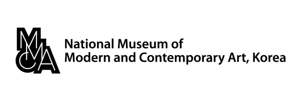June 25–September 20, 2020
30 Samcheong-ro, Jongno-gu
03062 Seoul
South Korea
Hours: Monday–Sunday 10am–6pm,
Wednesday and Saturday 10am–9pm
T +82 2 3701 9500
In 2020, 70 years after the outbreak of the Korean War, combat has ceased, yet the war is still ongoing. Interest in the war, however, has continuously faded with the passing years. Memories of the war are disappearing, as the generations that experienced it firsthand, including divided family members, displaced persons, Korean and foreign veterans, prisoners of war and war orphans, are gradually replaced by the generations without that experience. On the other hand, we are now able to understand the Korean War more thoroughly from diverse viewpoints, as confidential documents related to the war have been disclosed to the public.
The exhibition Unflattening introduces works of art that explore the war, about which we knew but toward which we were indifferent, and to humans involved in the war. The participating artists listen to the memories and unfamiliar stories hidden behind official explanations about the war, and pay close attention to human dignity, which was seriously damaged in the extreme situation of war.
For the first part of the exhibition, we summon the Korean War as it remains in the memories of the war generation. When the war began, many artists fled south to escape the gunfire, while some artists joined the war artist corps. Kim Songhwan created a series of works portraying the horrendous scenes of war that he witnessed from its start. Yoon Jungsik, forced to leave home with his young children to escape from the war, documented his experiences on the road. Meanwhile, journalist John Rich and AP photographer Max Desfor captured on camera, from their perspectives as foreigners, scenes from the War and images of the Korean people. The exhibition also shows the images of prisoners of war and civilians, including orphans, amidst the war.
For the past seven decades since the ceasefire, North and South Korea have remained in a state of tension in which war could be resumed at any time, thus making the division a perennial condition. South Korea has become a garrison state, with all adult males subject to mandatory military service, a huge budget allocated to defence every year, and nationalism and military culture shaping society at large. With fierce anti-communism influencing society at all levels, only official narratives about the Korean War have survived, while memories of war experienced by individuals in different situations have been oppressed or marginalized. The section Living with the War features works by artists inquiring into various problems of Korean society as it has been deformed and distorted by the national division.
The third section, To Live Like a Human, explores what we have lost and the values that have been damaged on account of war. Contemporary artists such as Ai Weiwei, who uses diverse media to inform the world about the situation of refugees, based on his experience of having been detained with his passport confiscated for four years; Erkan Özgen, who deals with the pain and burdens affecting women’s lives in regions of conflict; and Robert Knoth and Antoinette de Jong, who expose through their art and action the connections between the countless wars and dark transactions, inquire into the meaning of living like a human amidst societies under war. They ask: Why does war, which threatens the conditions of humane life, go on? How can we stop war, in order to live like human beings? What should we do for the refugees, who are living in substandard conditions?
The last section, What Is To Be Done?, provides space to think about and discuss various issues, ranging from issues at hand such as “how to overcome the militarism internalized in our daily lives” to such questions as “What kind of country should Korea be for those seeking refuge here?” This section introduces activities helping us search for ways to establish conditions for a more humane life, put an end to war, and pursue peace, together with the new generation. It also has a reading space with an assortment of books that look into the Korean War from diverse angles, and books that present visions of peace, as well as a workshop by Peacemomo on post-division peace education.

